
introduction
Axie Infinity kicked off the chain game in 2021. Since then, many chain games have followed a similar dual-currency + PVE gold-making model. However, the reskinned chain games applied by these models often have a series of problems:
Lack of gameplay, ecological participants are more profit-oriented and unable to attract real game users;
The economic model is based on a Ponzi structure and requires new players to enter the market to maintain profits, which is not sustainable;
The token stability is poor, which seriously affects player income and game economic stability;
The entry cost for users is high, especially in the early stages of the game when the circulation of each item is scarce. The entry cost is high, volatile, and easily controlled by large players.
In response to this dilemma, former members of well-known game teams such as FIFA and Halo launchedMixMob, aiming to optimize the ecology and operation model of chain games. MixMob:Racer 1 is the first blockchain game developed by it. The design features of its overall ecosystem include:
A racing game that matches market demand, has gameplay and competitiveness, has a fast game rhythm, and can attract a wide range of user groups;
The economic model with sports + gambling as the core is not a Ponzi structure and is more sustainable;
Ensure ecological stability and security through game tokens designed by SBT;
Design DeFi-like features to incentivize users and introduce more users without affecting the game economy.
How is MixMob:Racer 1 different?
MixMob:Racer 1 is the first strategic racing chain game developed by MixMob. Players can strategically build racing robots and decks according to their own preferences and operating habits, and win games in the arena to gain profits.
The key to competitiveness and economic sustainability—enriching game asset categories
As mentioned above, early chain games often lacked gameplay. One of the outstanding factors was that game props were highly repetitive. Players did not need or care what props were used to participate in the game process. As long as the gold farming efficiency was the same, no one wanted to Paying to play the game, each user only buys props for mining and selling, which has become the main reason for the short life cycle of chain games.
The 2021 DNA×CAT and this year’s Gas Hero initially demonstrated the benefits of enriching game props for ecological construction.Gamers who have competitive needs or need to compete in the rankings will be willing to pay extra funds to build a high-intensity game lineup, and are also willing to accept premiums for rare characters and props.In addition, how to build a lineup can become a hot topic and source of continuous discussion among players, and can also serve as a development basis for game guilds.
Through three types of NFTs - basic racing robots, strategic game card sets, and advanced equity NFTs, MixMob aims to enrich players gaming experience while injecting vitality into the ecosystem.
MixBots
MixBots are racing characters used by players when competing in MixMob:Racer 1, and are the most basic props of the game. Each MixBot has its own unique gaming characteristics. Official documentation data shows that there are 226 characteristics (TRAIT) of racing robots. Since each player has different gaming habits and operating styles, players need to obtain matching characteristics that match their playing style. of MixBot, thereby maximizing its power. How to select and build a suitable MixBot is the first step in enriching MixMobs game assets.
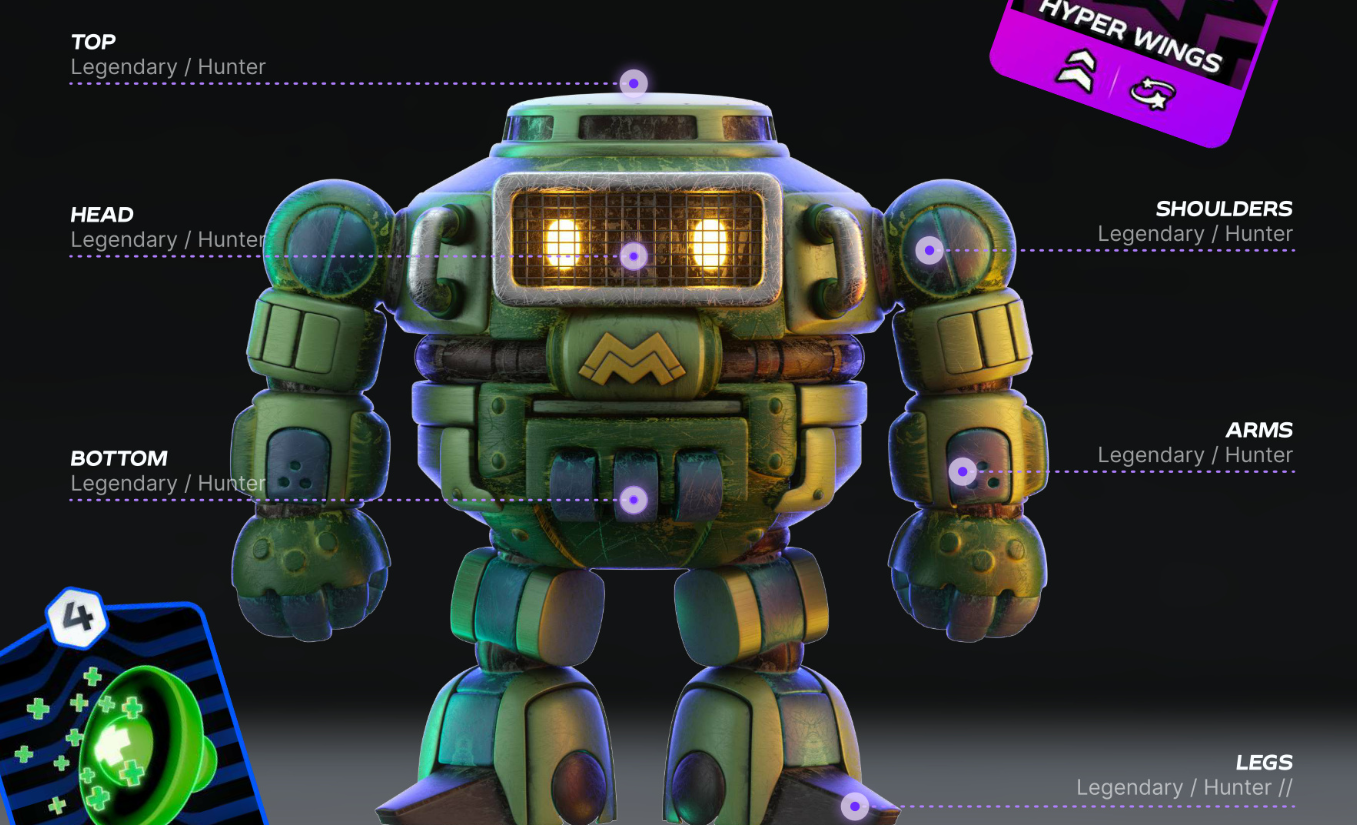
deck
Card Decks are a set of props and skill cards pre-assembled by players before the game. They will be used during the game and have a series of functions such as offense, defense, and enhancement. As important props that affect the game, how to carry out strategic combinations and how to match them with personal style have become factors that players need to consider, and this is also a great pleasure of MixMob.
The picture below shows some examples of game decks, including functions such as accelerator cards, life gain, attacking competitors, and defense. In addition, there are various competition function decks such as slowdown, interference, traps, etc.
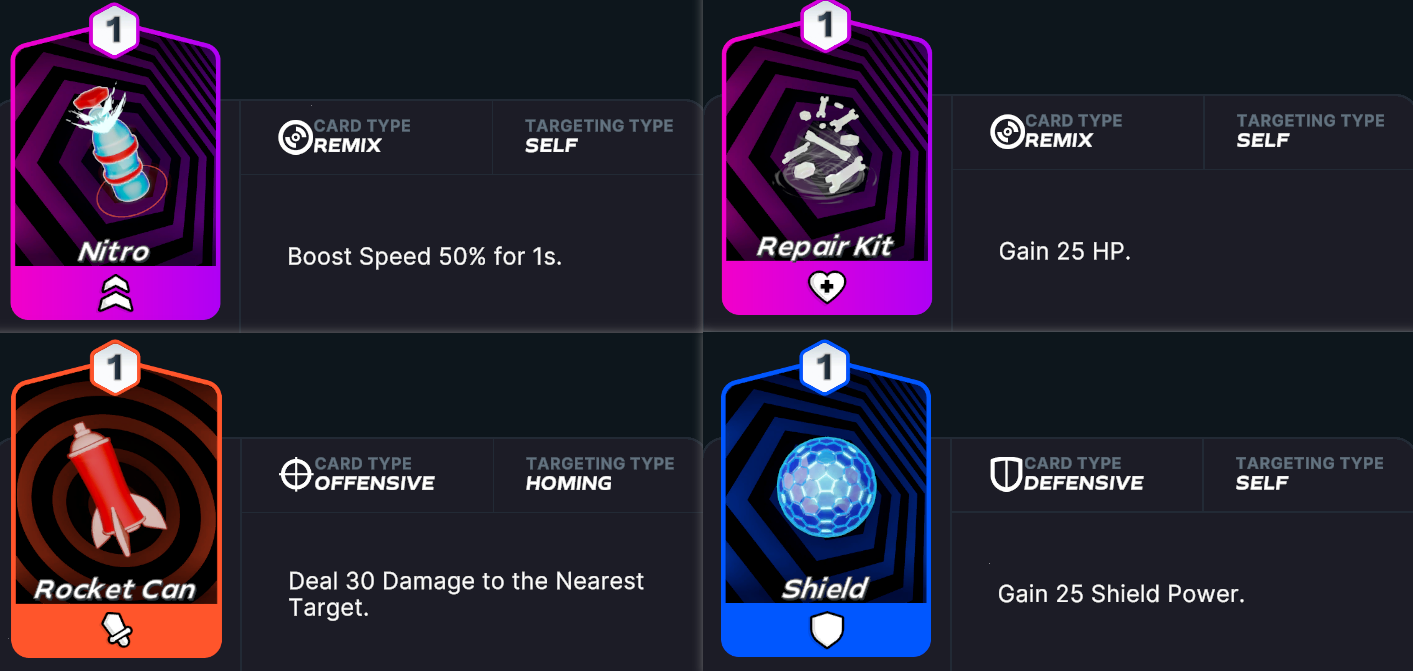
The above content initially demonstrates two ways to enrich MixMobs game assets. The game has more advanced card groups and Bots for players to strategically combine. Through the difference in combination, more users can be attracted to participate in research and invest in game victory, thereby stabilizing the overall ecology.
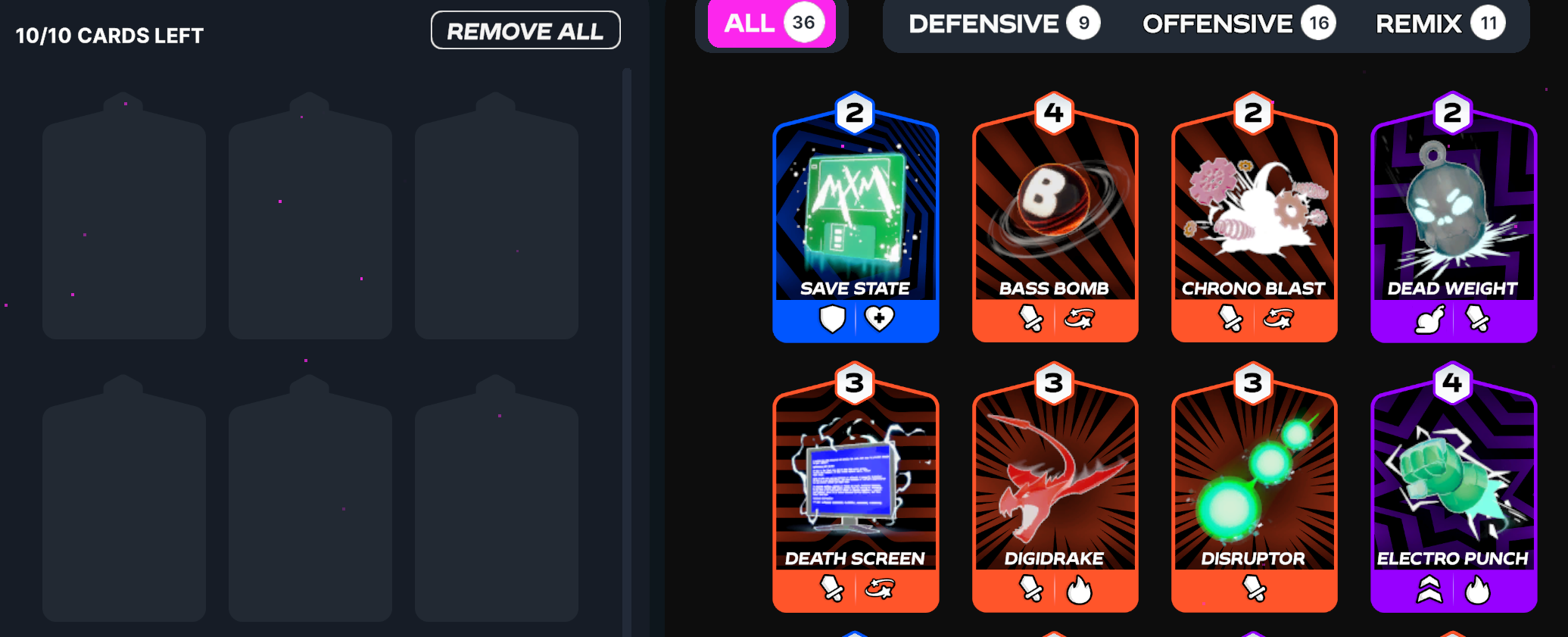
MixMob Gen 0 Mask
In addition to competition assets, MixMob has also launched an advanced equity asset - MixMob Gen 0 Mask. This asset is a players unique identity in the MixMob universe and has a series of functions such as unlocking costumes, priority experience in games and activities, and reward multipliers. .
Ecological users and operation process
Returning to the gameplay elements again,Whether the game itself is interesting and playable is the fundamental question.
The wave of chain games in 21 years has also seen several chain games with a certain richness in asset types, such as BinaryX, Star Shark, etc., but their game mode is basically Place to Earn, and the ecological participating groups have been divided into two categories accordingly. : Game participants, after building a suitable lineup, hang up and earn gold every day, and there is basically no need for additional operations. Secondary investors purchase game tokens and props with the aim of selling them to make a profit when players enter the game in large numbers and asset prices rise. The lack of real players means that the entire ecosystem is still a Ponzi structure, relying on players who enter the market late to make profits.
And MixMob:Racer 1 aims to provideA truly fun game builds an ecosystem with multi-party participation to maintain long-term operation.User participation methods and overall operation process include:
game participants
Players compete in venues called Turbo Arenas and pay an entrance fee of MXM or SUD$ tokens to enter the game. The entrance fee paid by players will enter the competition reward pool. Among them, MXM is the governance token and SUD$ is the game token. Its specific uses will be explained in detail later.
Players need to rely on their own prop combinations and skills to compete with other players in the arena. Players are eligible to win a part of the reward pool every time they win a match. Different arena types determine the maximum number of wins and losses a player can have per round. In addition, users who rank first in the arena will also have the opportunity to obtain special NFT props Pit Boosts, which have rights such as energy replenishment and priority use of game decks. In a nutshell, MixMob has built a strategic racing game that encourages players to improve their item combinations and hone their skills in order to profit within the arena.
At present, the game has opened player competition and robot competition modes on the web side, and will gradually open the iOS and Android sides in the future to further leverage the convenient gaming features of racing games.

bettor
Non-gamers can simply watch the game, or they can place bets on favorite contestants and make profits based on the game results. 5% of the betting prize pool will belong to the contestants, 5% will be allocated to the MixMob project treasury, and the betting players will receive rewards in proportion.
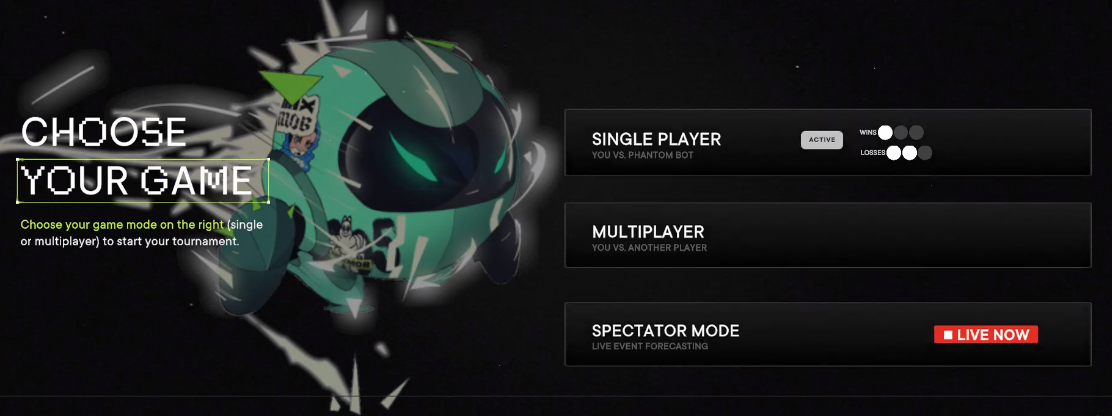
Token stakers
Users can choose to stake MXM tokens to specific Turbo Arenas to share in that arena’s revenue. Turbo Arena income includes arena profits, betting rake fees, transaction fees, etc., which will be distributed according to the users staking ratio. Stakeholders will receive benefits in the form of SUD$.
Individual Turbo Arenas will compete against each other based on overall performance, fees charged, and MXM staked volume. Winning arenas will receive high-level rewards and be distributed to members. Therefore, in addition to obtaining staking shares, stakers also have the motivation to recruit new participants to improve their rankings. Arenas can incentivize players from other arenas to join by offering better rates, governance perks, or exclusive content.
Token introduction
Token use cases and mechanisms
MXM is MixMob’s governance token.Has the following functions:
Arena admission fee: Players need to pay MXM to participate in the competition to win competition prize pool rewards;
Activity rewards: By actively participating in the ecosystem (based on game time, game achievements, etc.), users will be able to earn MXM from the MixMob reward pool;
Recommendation rewards: By recommending users to enter the ecosystem, the recommender will receive MXM and SUD$ tokens;
Manage MixMobs features, upgrades, and various parameters, including MXM Alliance, Turbo Arena, etc.
SUD$ is the game token in MixMob,It can be used to pay for admission to competitions, purchase MixBot, Card and other game props. SUD$ can be obtained through in-game purchases, winning contests, participating in activities, etc.SUD$ is a soul-bound token (Soul-Bound Token, SBT),Players cannot transfer SUD$ to other addresses and can only use it in games or redeem it at a fixed ratio with MXM. In other chain games, because game tokens can be traded in the market, price fluctuations also affect users costs and benefits. Setting SUD$ to SBT is designed to solve this problem. In addition, SUD$ has a dynamic quarterly distribution cap. When the cap is reached, users can only redeem SUD$ through MXM to participate in the game ecosystem. When player demand is strong and the supply of SUD$ is insufficient, mechanisms such as the SUD$ transaction cycle and output reduction will be triggered. Through the above mechanism, when the demand for SUD$ is insufficient, MXM will bear the sales demand of SUD$ to balance the market. When the demand is excessive, the circulating MXM will increase the supply and return the quantity to achieve the balance of supply and demand, thereby stabilizing the economic system.
MXM Token Economics
The total number of MXM tokens is 1 billion, and its distribution details are as follows:
The public sale accounts for 6%, and all will be released during TGE;
Investors account for 30%, 15% of which will be released during TGE, and the rest will be released linearly for 17 months;
20% for the team, locked for 6 months, and linearly released for 48 months.
Game incentives 15%, ecological funds 5%, liquidity 4%, project treasury 20%;

At present, the MixMob governance token MXM has been officially launched, and can be traded on the chain in DEXs such as Orca and Raydium. In terms of centralized exchanges, Bybit and KuCoin have been launched.
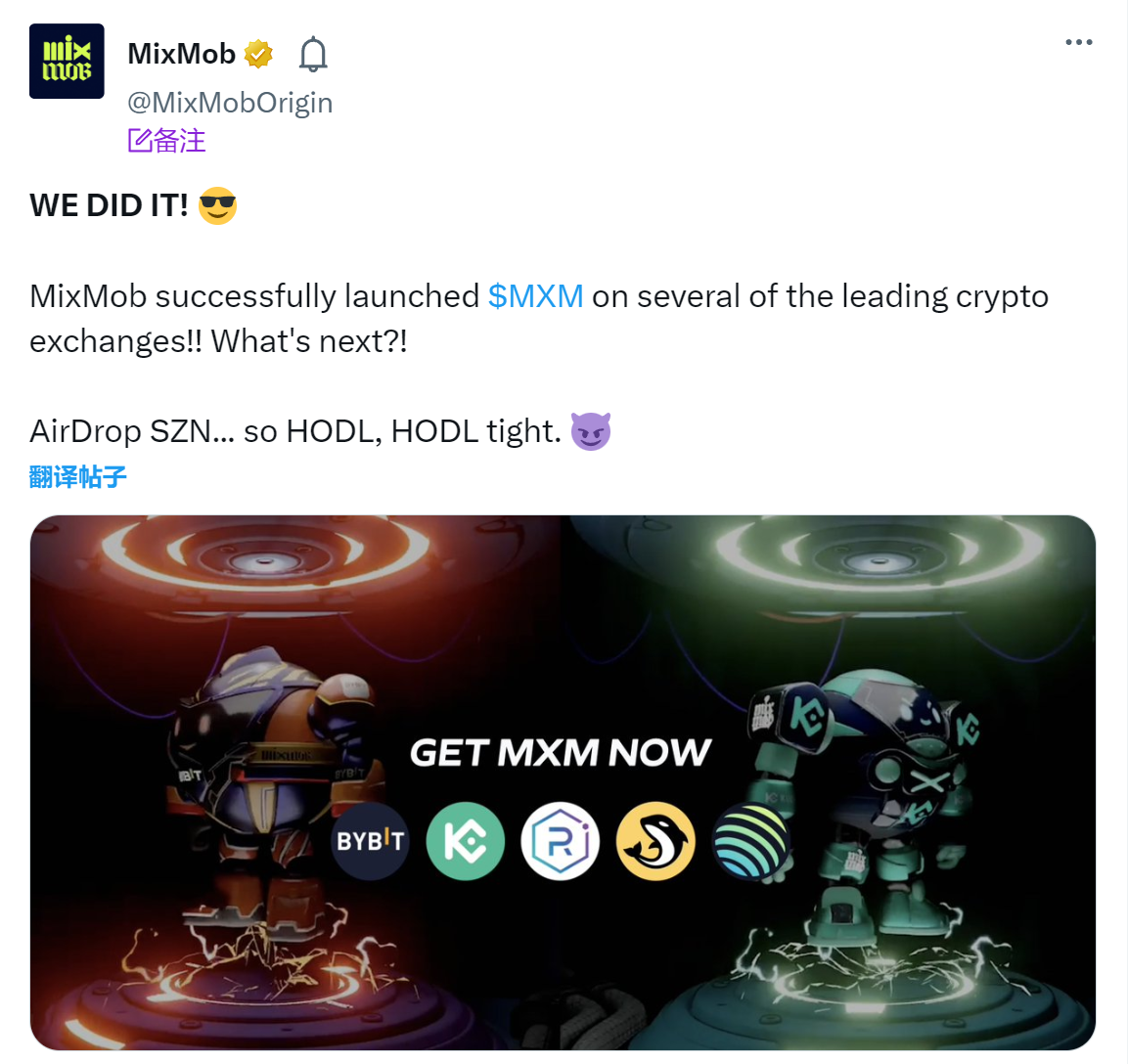
Team and financing status
MixMob is developed by seasoned gaming veterans who have worked on games such as FIFA, HALO, Battlefield, PokerStars and more.
CEO Simon Vieira has over 15 years of experience in the technology and video game industries, having managed multi-million dollar projects from Facebook to mobile devices, all the way to AAA games, Simon has successfully launched over 100 video games and apps program. Pavel Bains, CEO of the decentralized database Bluzelle, serves as the supervisor, and former FIFA Mobile design leader David Dryden is responsible for the game. The team has rich experience in game development and operation.
In November 2021, MixMob completed an angel round of financing from Solana Ventures, DeFiance Capital, QCP Capital, Merit Circle, Arthur Haye, The Daily Ape founder Darren Lau, Nansen CEO Alex Svanevik, Ascensive Assets partner Oliver Blakey, Bluzelle Networks Founder Pavel Bains and others participated in the investment.
In February 2022, MixMob once again announced the completion of a US$7 million seed round of financing, led by Defiance Capital, Ascensive Assets, Not 3 lau Capital, IOSG, Genblock Capital, Shima Capital, Skynet Trading, Merit Circle, Avocado Guild, Morning Star Ventures, Rising Stars, Solana Insiders and others participated in the investment.
Current data performance and future product plans
According to MixMob’s official disclosure, MixMob: Racer’s daily active users have exceeded 2,500, and its seven-day retention rate has reached 70%. MixMob will continue to expand the game and the overall ecology. The current main plans include:
Token Expansion: Allowing the use of other cryptocurrencies in arenas will bring more communities that can build unique Turbo Arenas based on their tokens.
Racing Team: A team built by players. MXM participates in the team and cooperates to win rewards.
Arena Operations: Users can operate/rent an arena and modify the fees, victory and defeat reward parameters of a specific arena, affect the overall economy of the arena, and be able to sell well-run arenas as an asset to other users.
UGC: Users can build their own game assets, create unique game props by combining them with original assets, and sell them to other users.
In general, MixMob has the courage to bid farewell to the Ponzi model, and has built a game ecosystem with long-term vitality by providing highly gaming racing games. With the further enrichment and implementation of game content, it is expected to rapidly develop in the new wave of chain games. Heading into the distance.